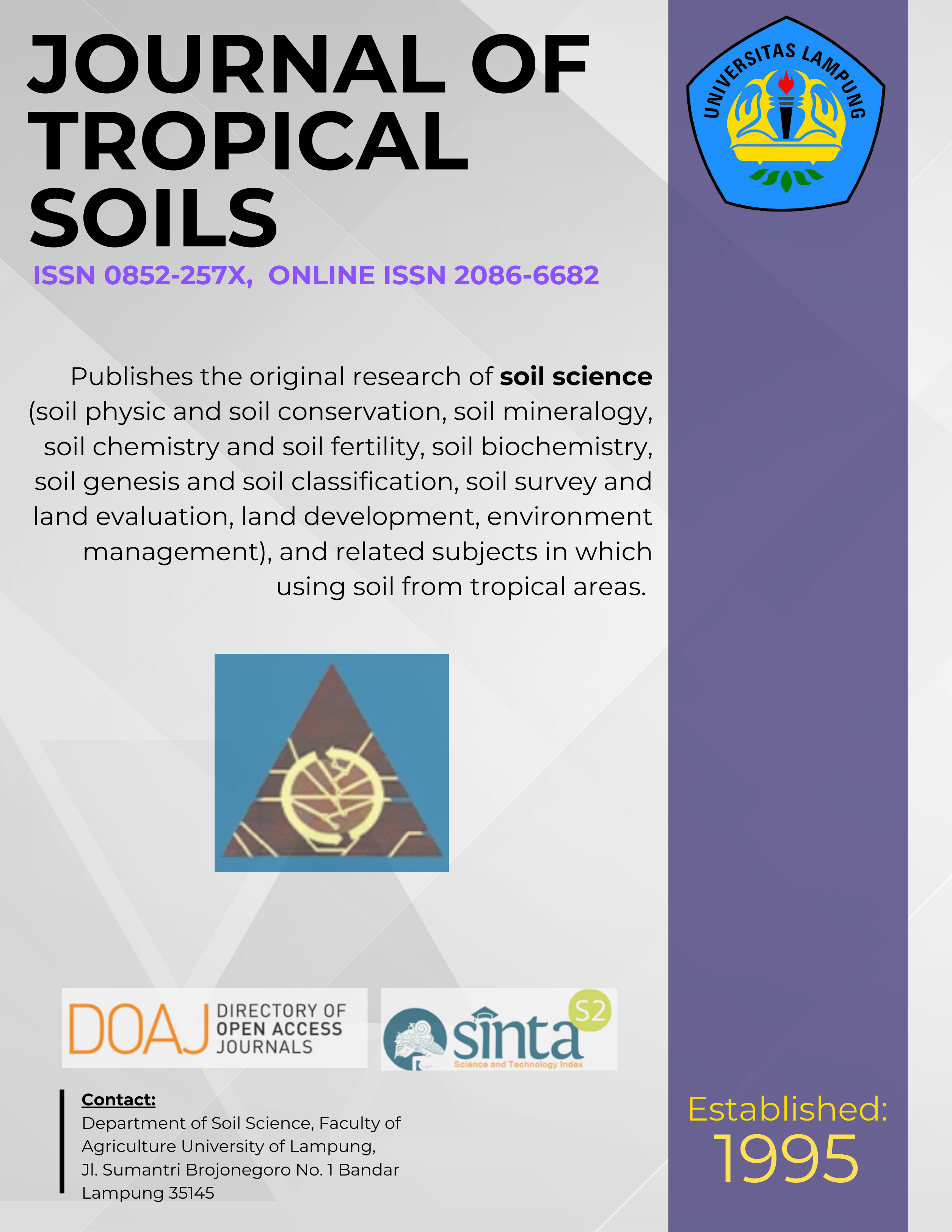Effect of Compost Combination on Methane Emission in Undisturbed Acid Sulphate soil in South Kalimantan of Indonesia
Main Article Content
Abstract
A greenhouse experiment was conducted to examine the cumulative methane (CH4) emission in paddy soils and correlation with soil redox potential (Eh), soil pH and plant growth. The experiment was arranged in two factorial randomized block designs with three replications. The first factor was a kind of of organic matter, i.e. without organic matter (T0), combination of 50% of composted straws and 50% composted rush weed (T1), combination of 30% of composted straws and 30% composted rush weed and 40% composted cattle manure (T2) and the second factor was the management of water that was continuously flooded and leaching. The methane emission was measured in South Kalimantan using the chamber and gas chromatogram technique. The results showed methane emission in undisturbed acid sulphate soil ranged from 0.05 to 0.32 mg CH4.m-2.minute-1 during the rice-growing season. The methane emission from the paddy soil were lower when the paddy was drained than when it was flooded. Correlation analysis showed a negative relation between methane emission and soil redox potential (Eh) and soil pH in both water management. The rice plant height and number of buds has positively correlation with methane emission with coeffecient correlation of r=0.84**(P<0.0001) and r=0.64**(P=0.004), respectively.Â
[How to Cite: Wahida A and A Maas. 2015. Effect of Compost Combination on Methane Emission in Undisturbed Acid Sulphate soil in South Kalimantan of Indonesia. J Trop Soils 20: 135-141. Doi: 10.5400/jts.2015.20.3.135]
Â
Downloads
Article Details
Section
License for Authors
Authors who publish with this journal agree to the following terms:
- Authors retain copyright and grant the journal right of first publication with the work simultaneously licensed under a Creative Commons Attribution License that allows others to share the work with an acknowledgement of the work's authorship and initial publication in this journal.
- Authors are able to enter into separate, additional contractual arrangements for the non-exclusive distribution of the journal's published version of the work (e.g., post it to an institutional repository or publish it in a book), with an acknowledgement of its initial publication in this journal.
- Authors are permitted and encouraged to post their work online (e.g., in institutional repositories or on their website) prior to and during the submission process, as it can lead to productive exchanges, as well as earlier and greater citation of published work (See The Effect of Open Access).
License for Regular Users
Other regular users who want to cite, distribute, remix, tweak, and build upon author’s works, even for commercial purposes, should acknowledge the work’s authorship and initial publication in this journal, licensed under a Creative Commons Attribution License.

